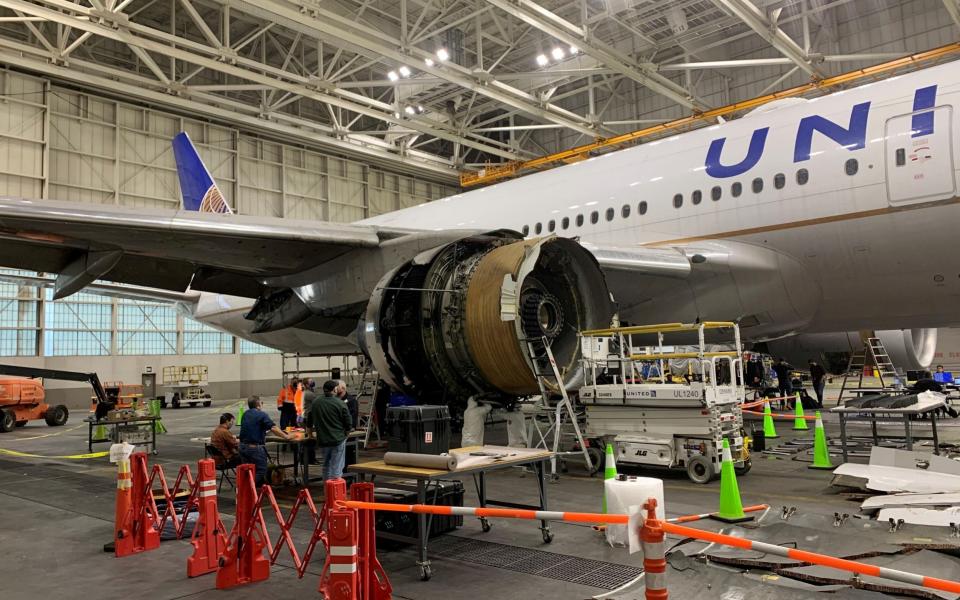Turbine blades face checks after Boeing 777 engine explosion

All engines of the type that exploded mid-flight on a United Airlines Boeing 777 jet last weekend must be checked for internal cracks before they can fly again.
The Federal Aviation Administration (FAA) issued an emergency airworthiness directive about the Pratt & Whitney PW4000-112 engines after one exploded and caught fire, with debris hitting the aircraft fuselage and falling to the ground in Denver.
Early investigations by the National Transportation Safety Board indicated one fan blade in the turbine suffered “metal fatigue”, causing it to break at its base, hitting another blade and snapping it.
The jets have been grounded since the incident on Sunday aboard United Airlines flight 328, in which no one was harmed. It was the third time in three years that an engine of this type has suffered a similar incident.
The FAA said the large titanium fan blades at the front of each engine must be checked using “thermal acoustic imaging” systems.
This can detect cracks on the interior surfaces of the hollow fan blades, or in areas that cannot be seen during a visual inspection.
The regulator said the checks were needed because it had determined an “unsafe condition is likely to exist or develop in other products of the same type design”.
Examining the blades requires them to be shipped to Pratt & Whitney, the company said.
The FAA will review data from the checks and could require the affected engines to be checked more frequently than the current requirement of once every 6,500 takeoff and landing cycles.
Pratt & Whitney, owned by Raytheon, said the directive was limited to the PW4000-112 engines fitted to 128 Boeing 777 jets - less than 10pc of the total fleet.
The development came as it emerged the 26-year-old jet that suffered the engine failure was part of its fleet used as collateral to raise billions by United.
According to a Bloomberg report, the 777 one of dozens of jets in the carrier’s fleet used to secure funding against in October to help the airline weather the collapse in air traffic caused by the pandemic.
At the time, CreditSights analyst Roger King called the deal a “kitchen sink” offering because of the poor quality of the underlying assets.
If the engine failure means the 777s are retired early it will devalue them, potentially reducing the amount of debt secured against them.

 Yahoo Finance
Yahoo Finance 